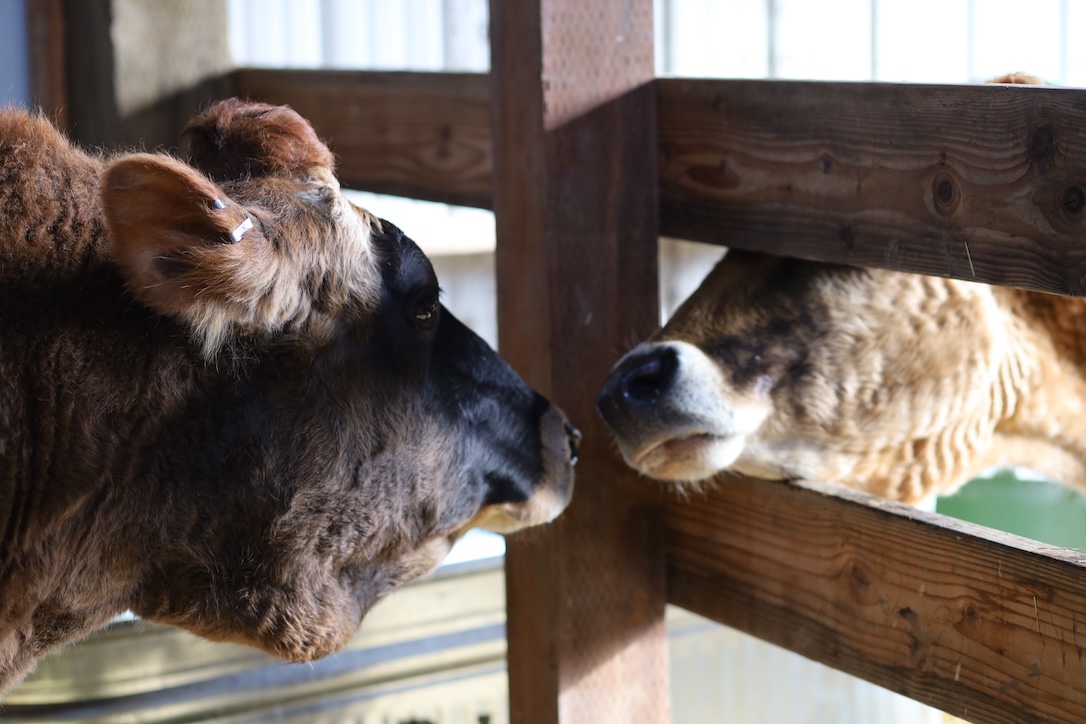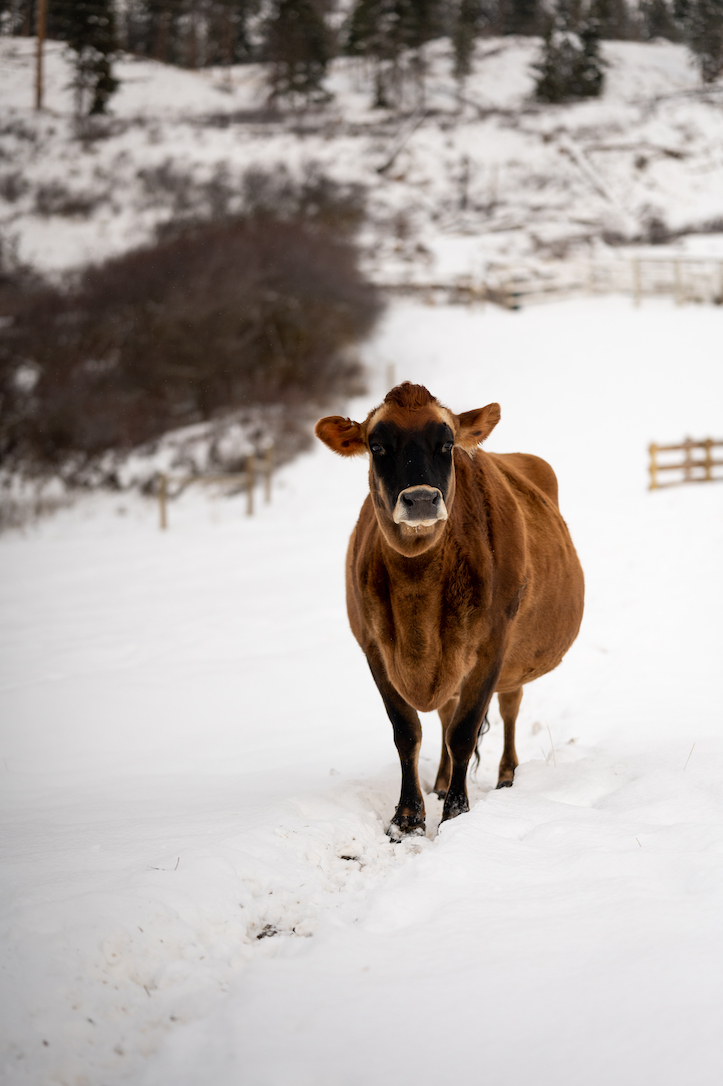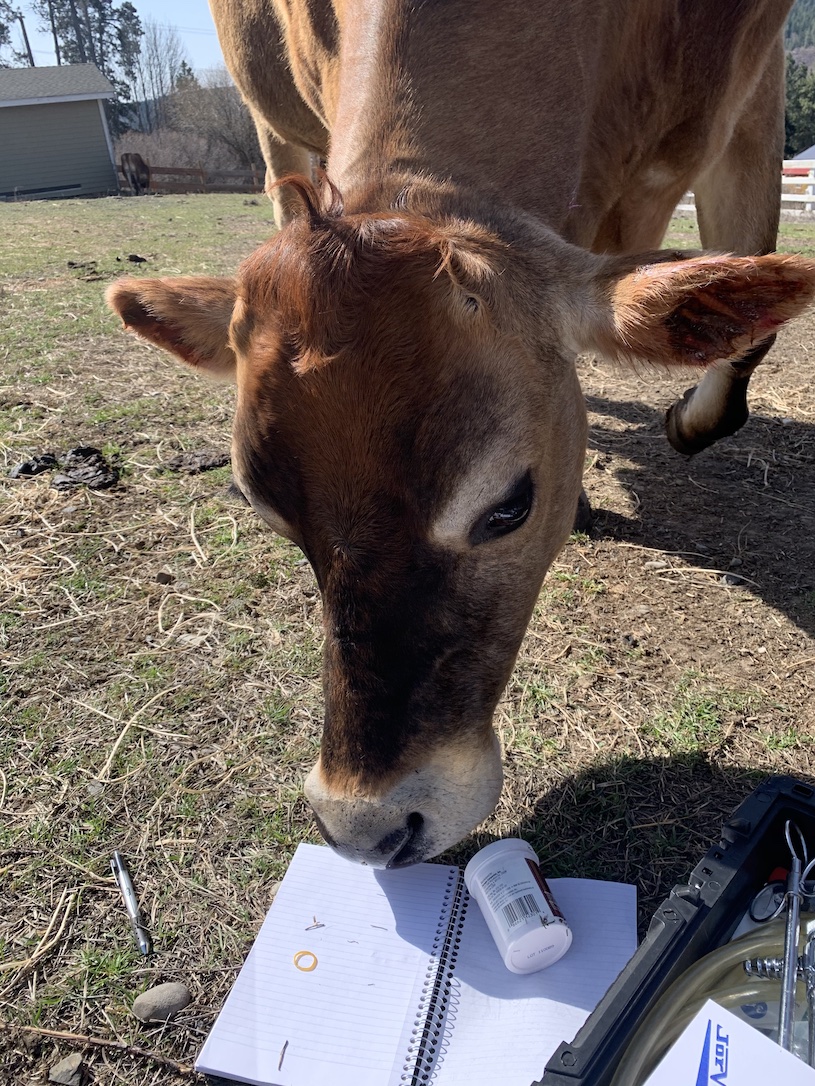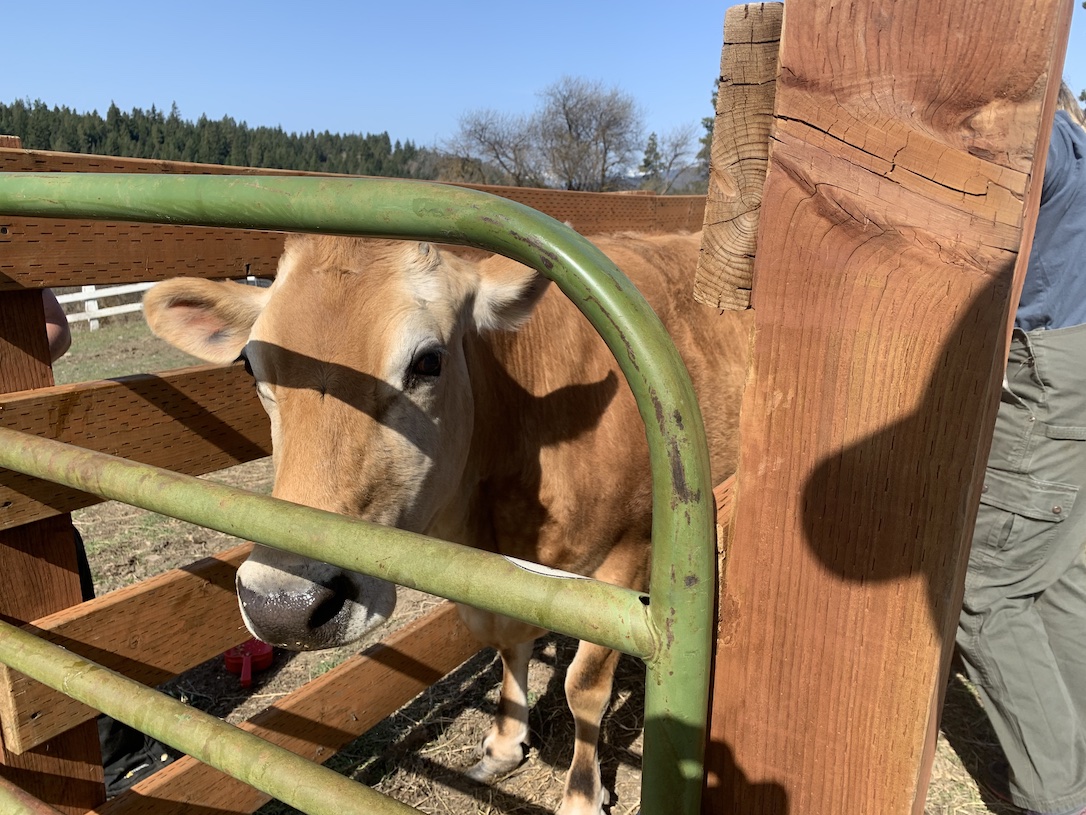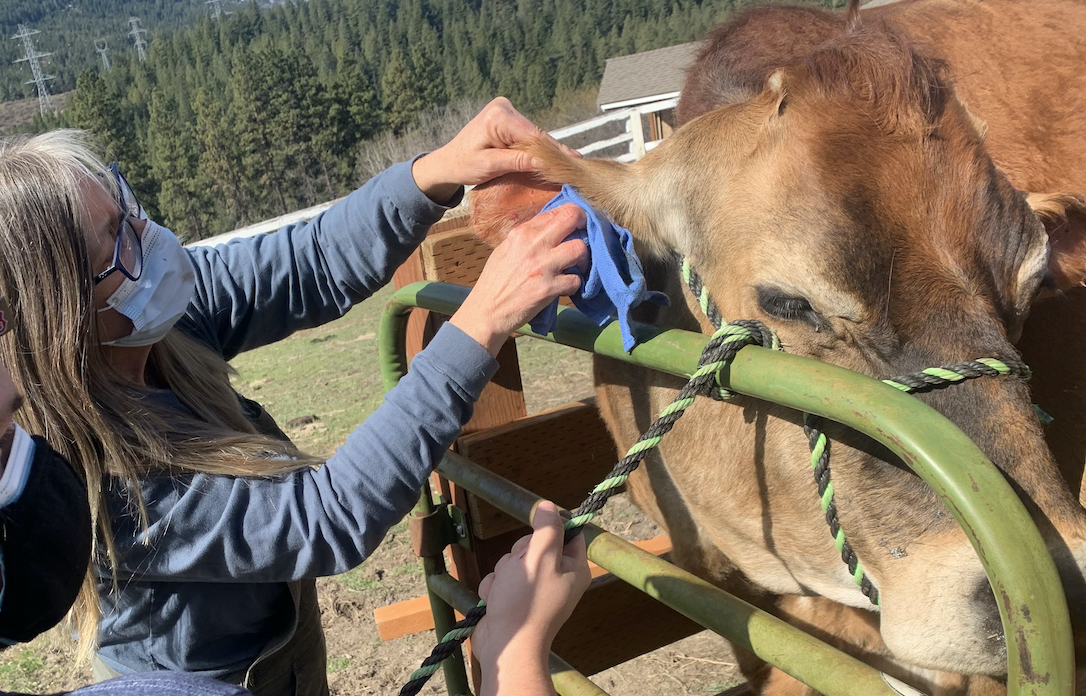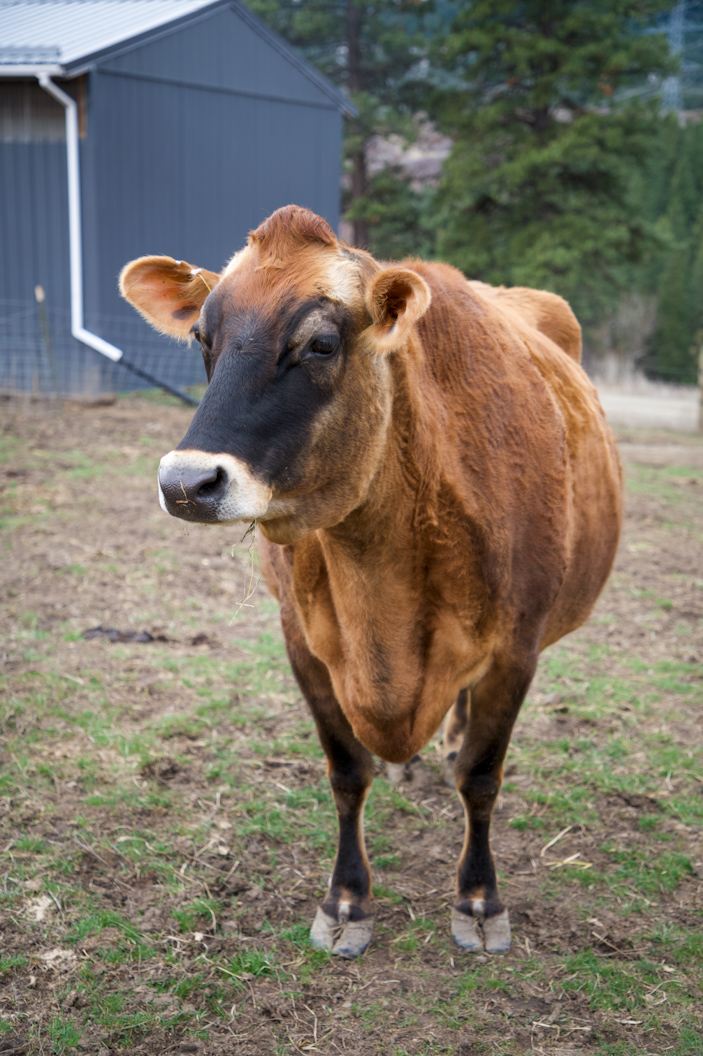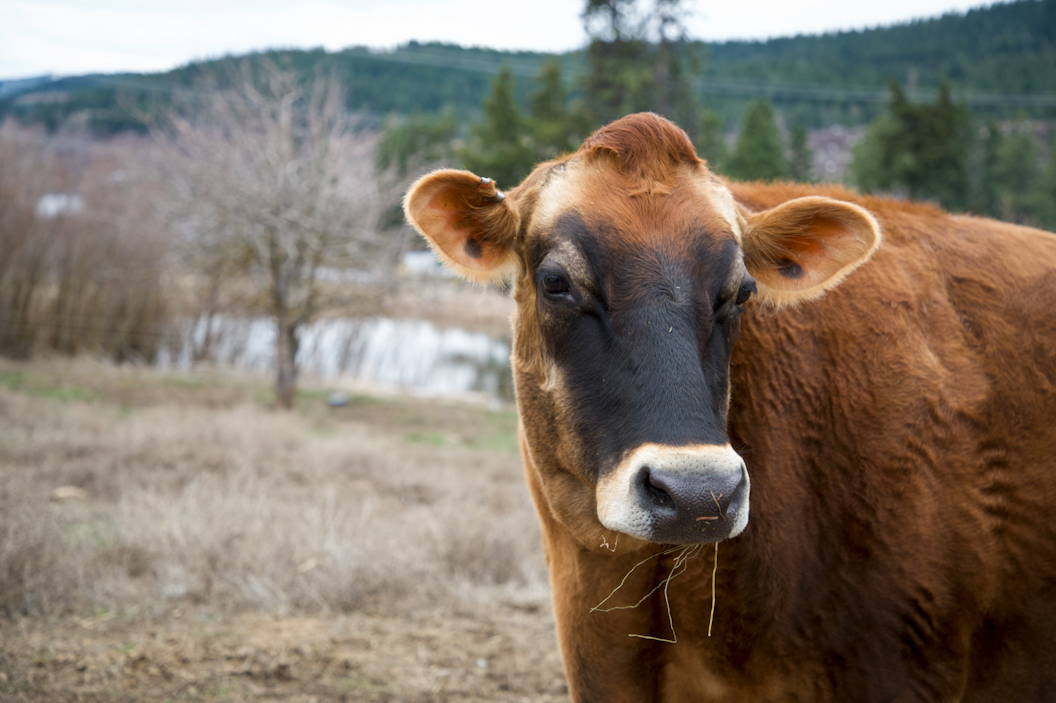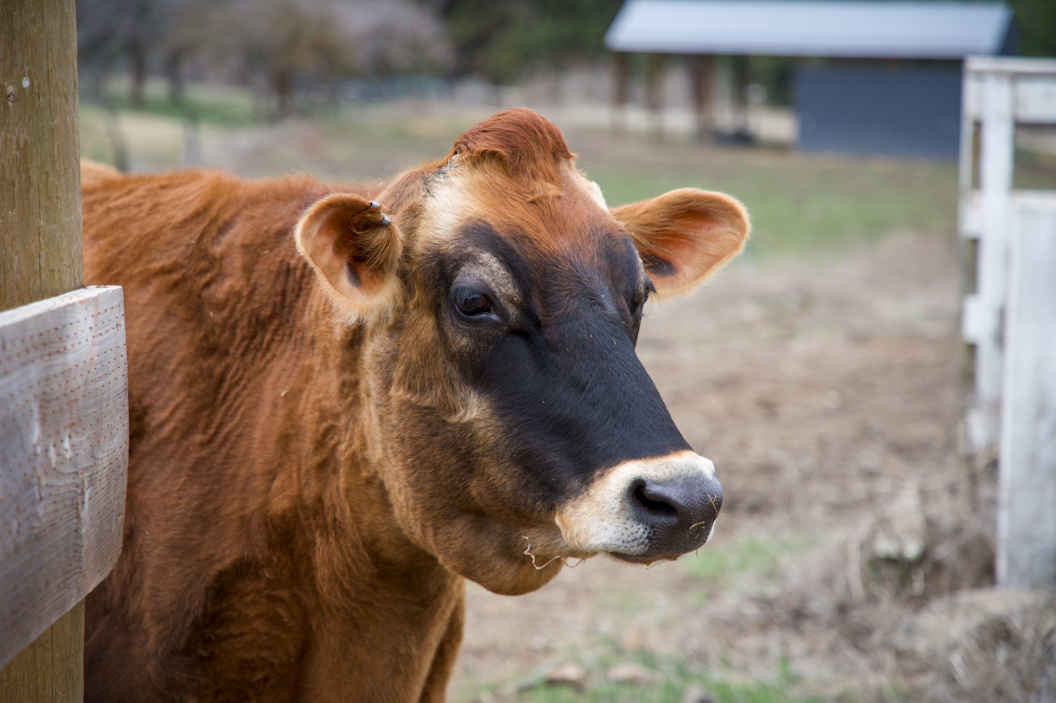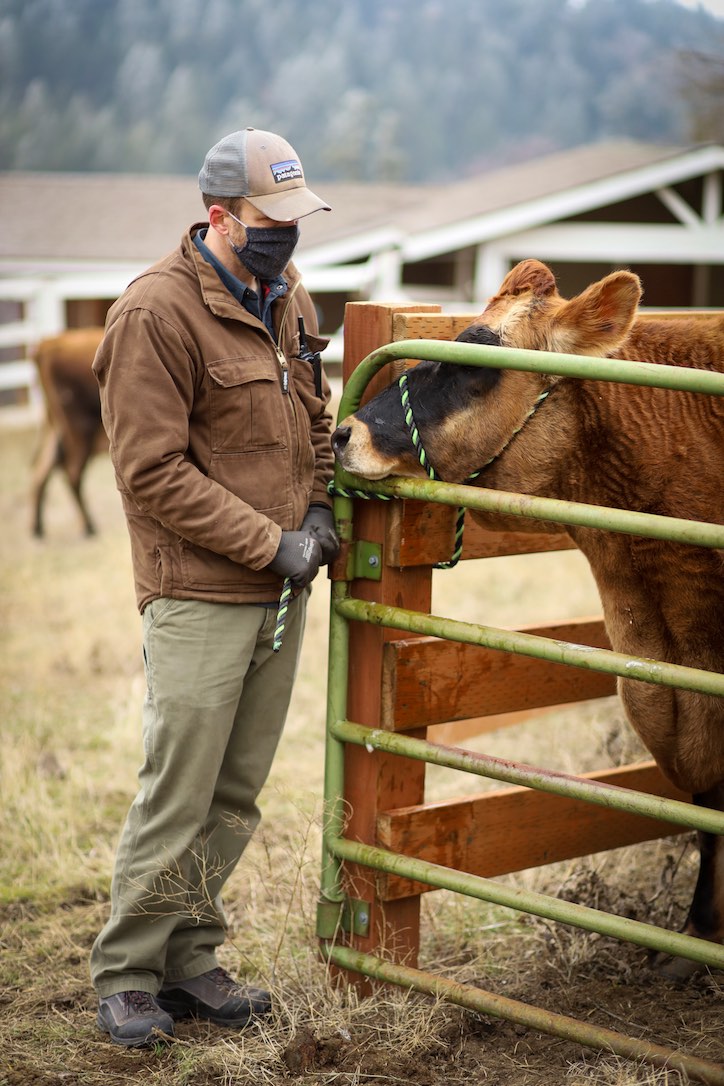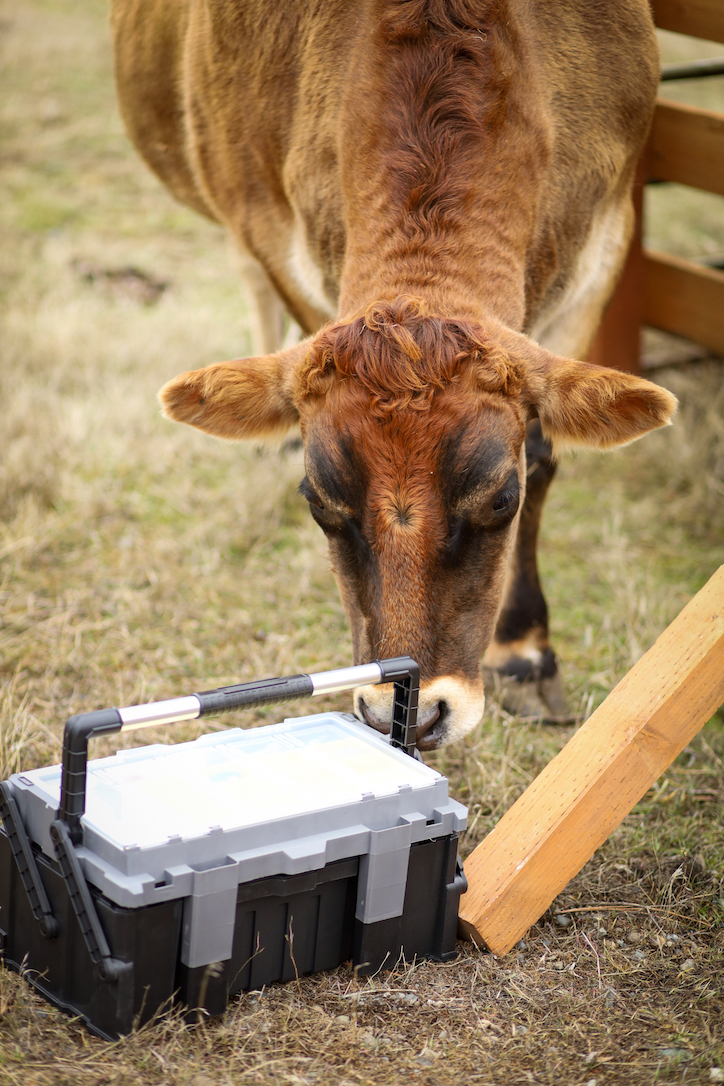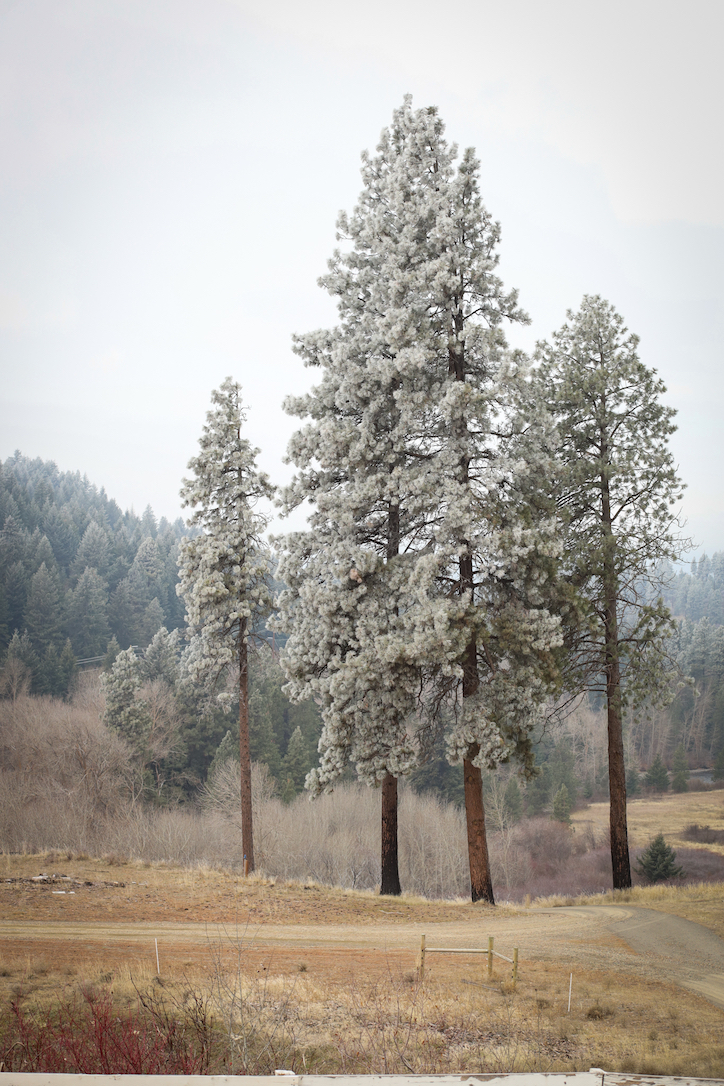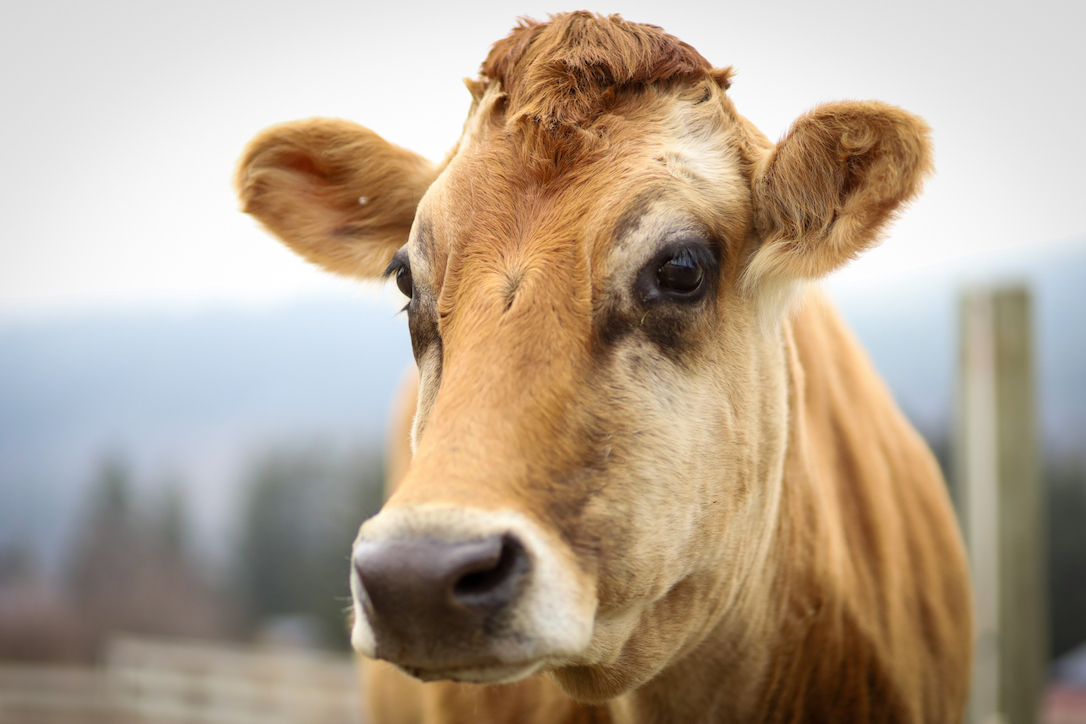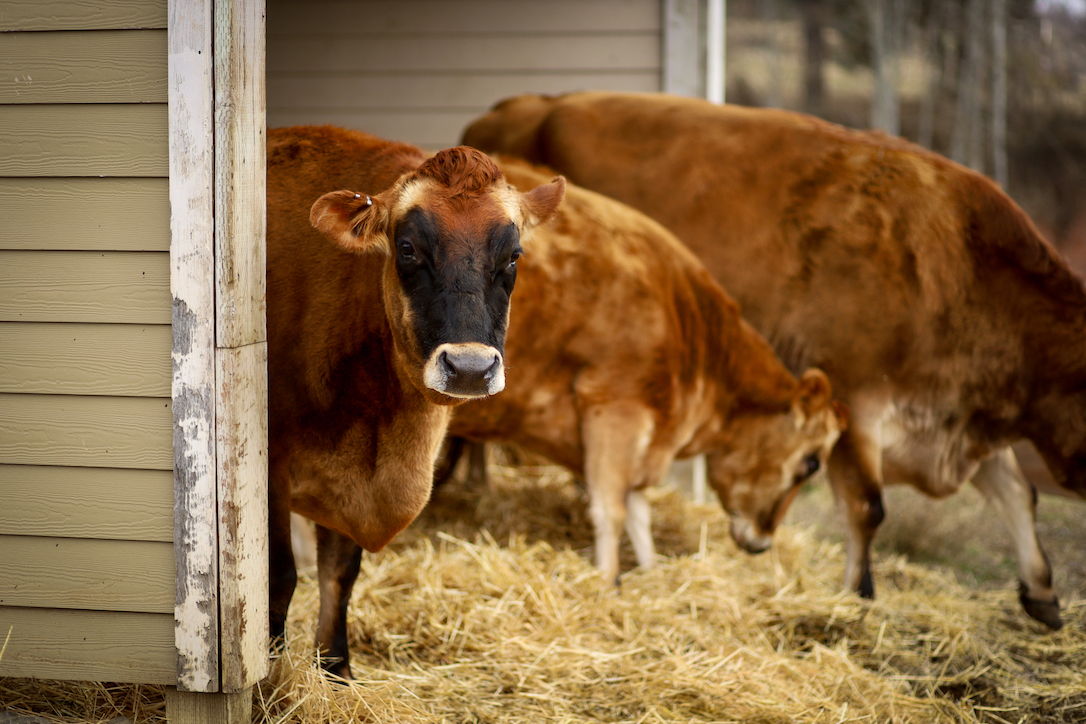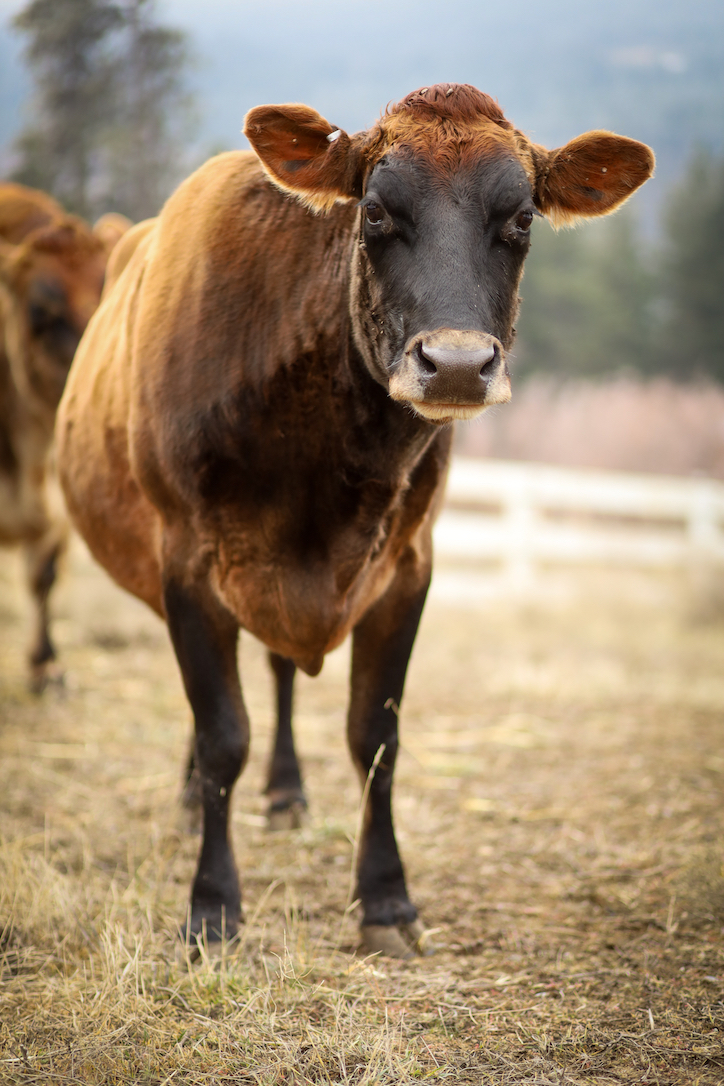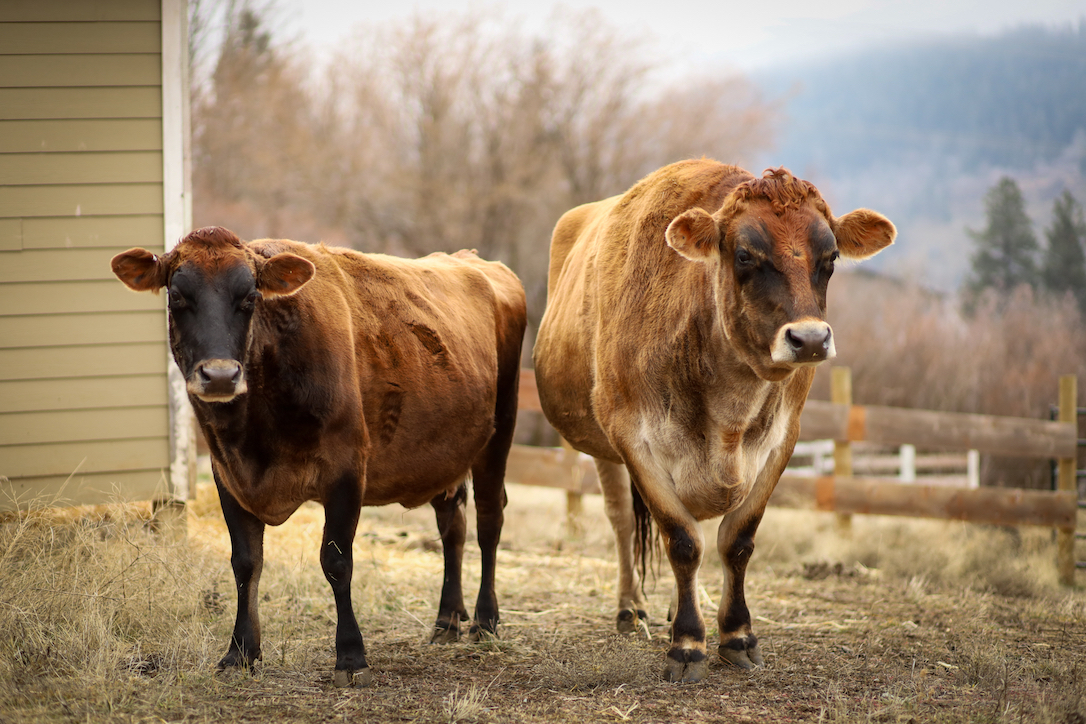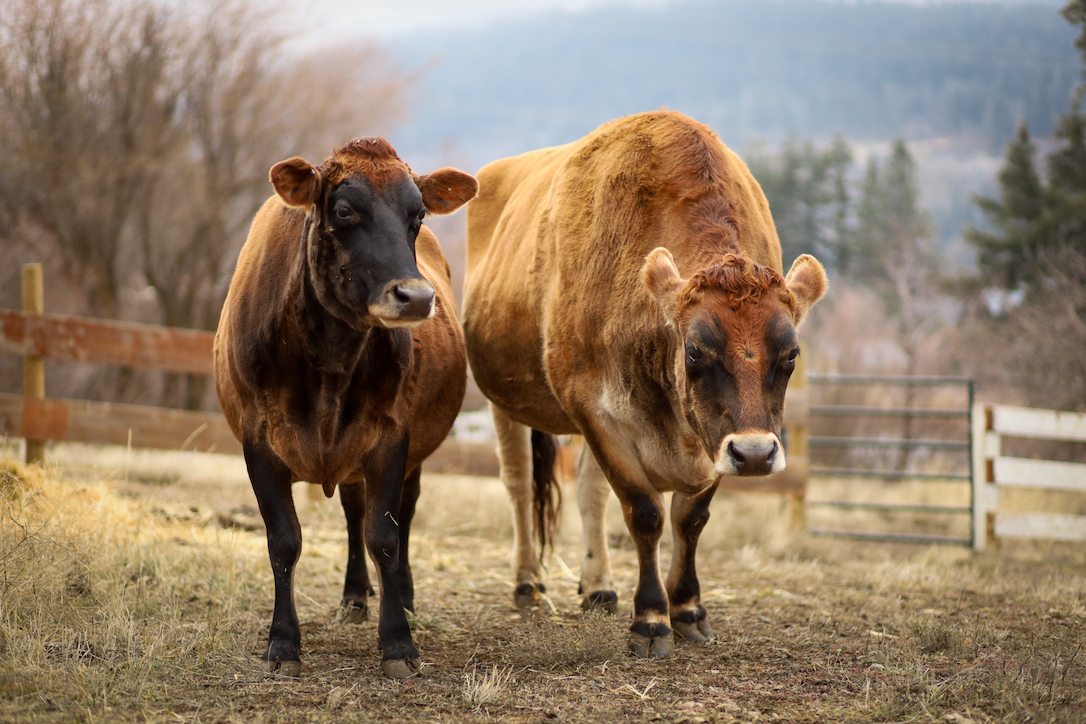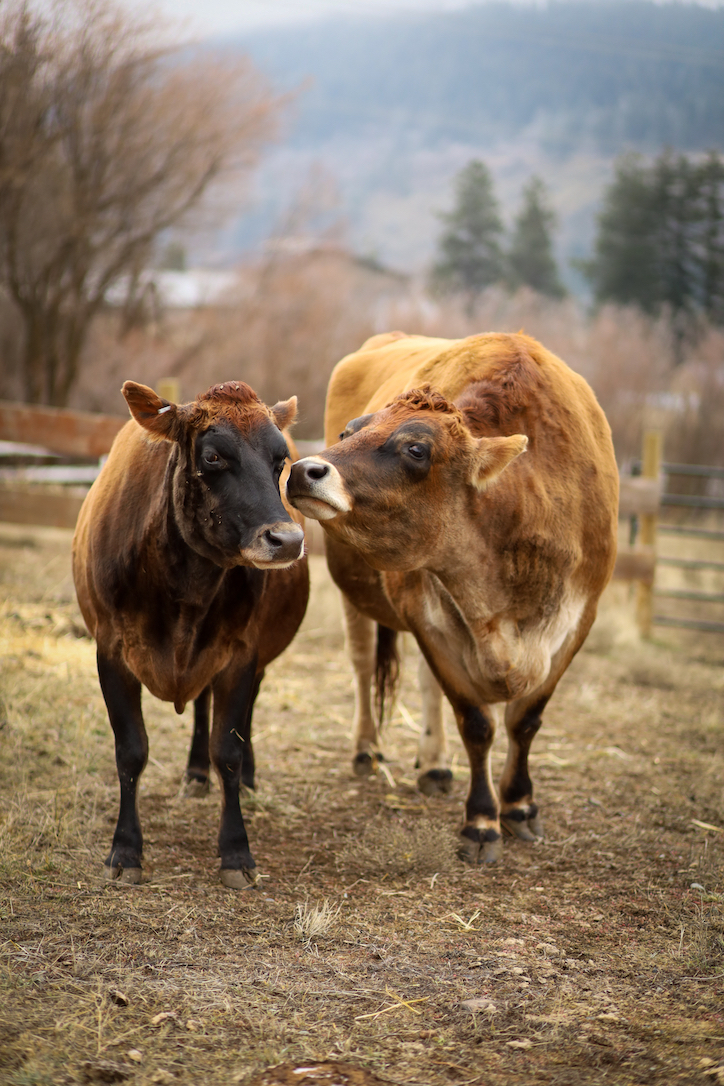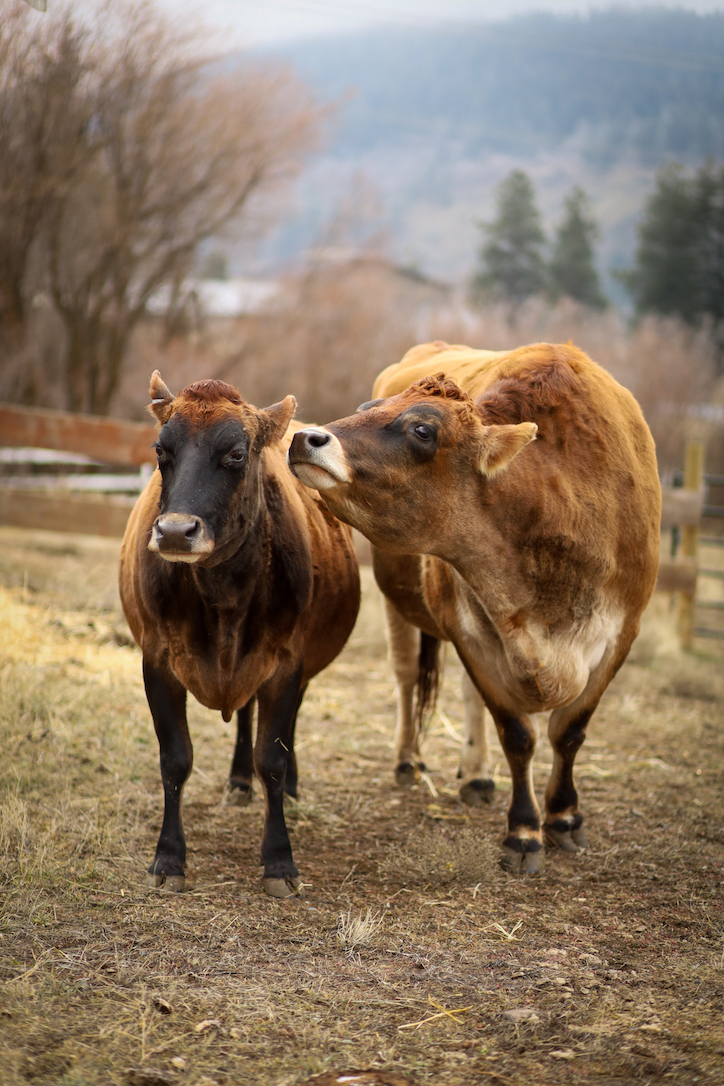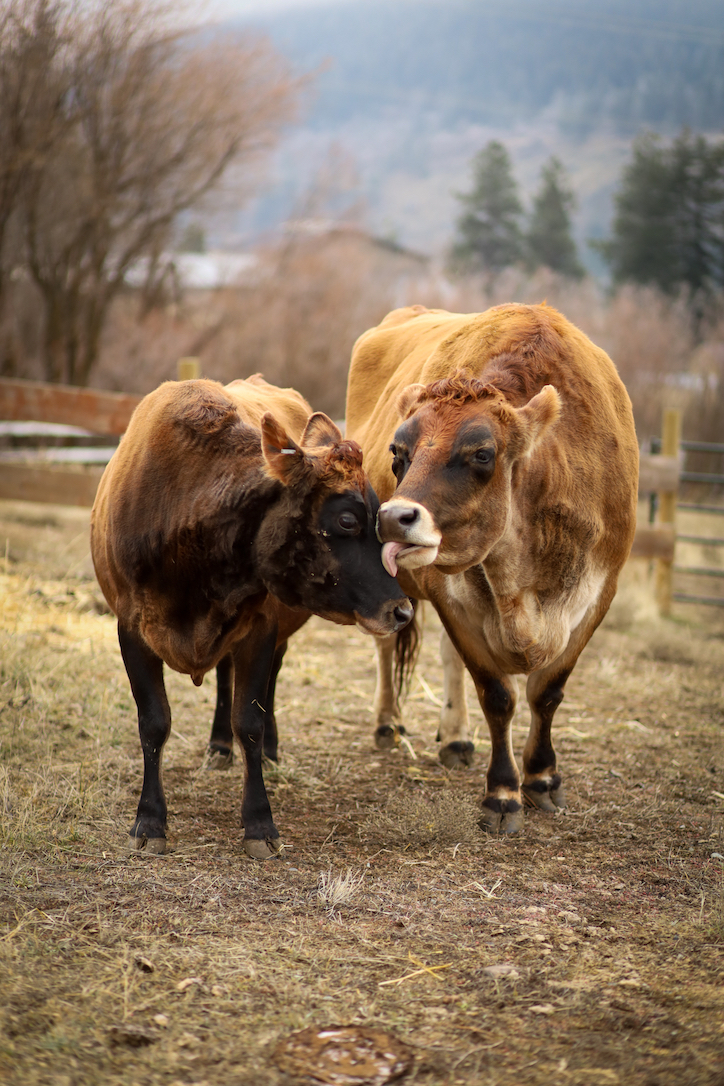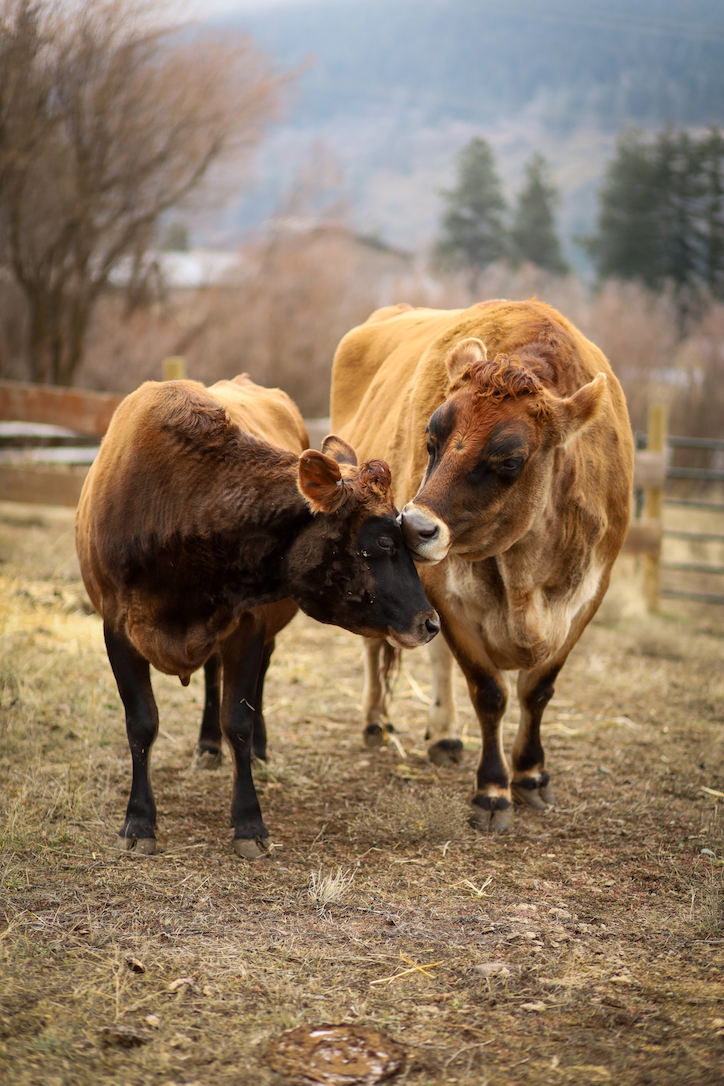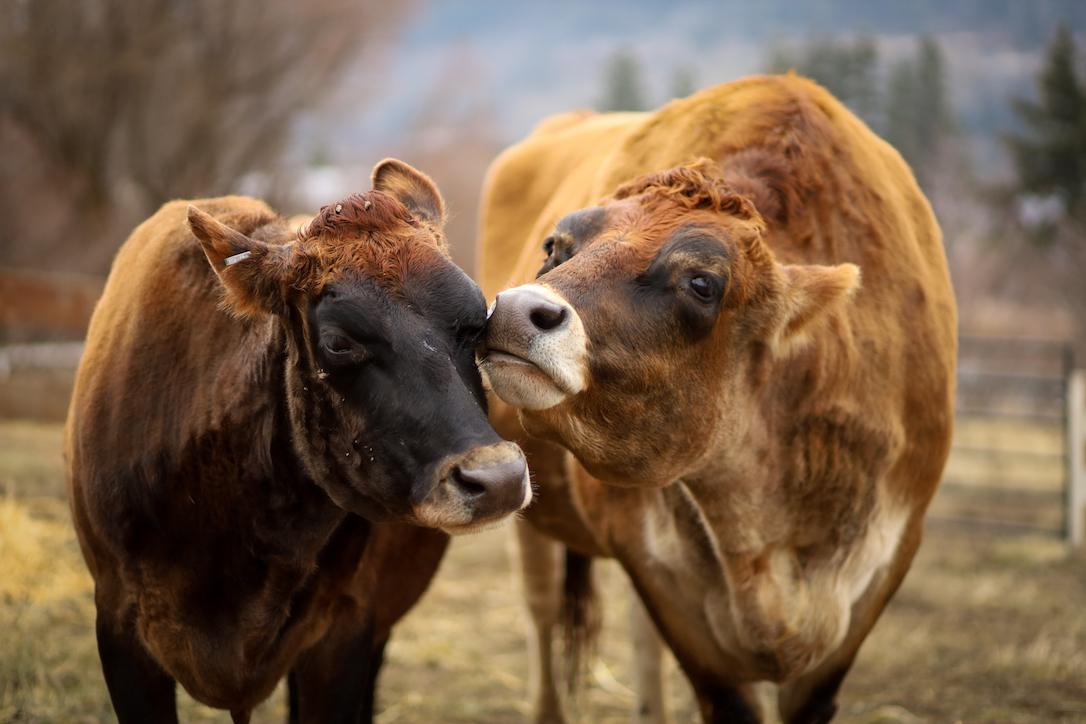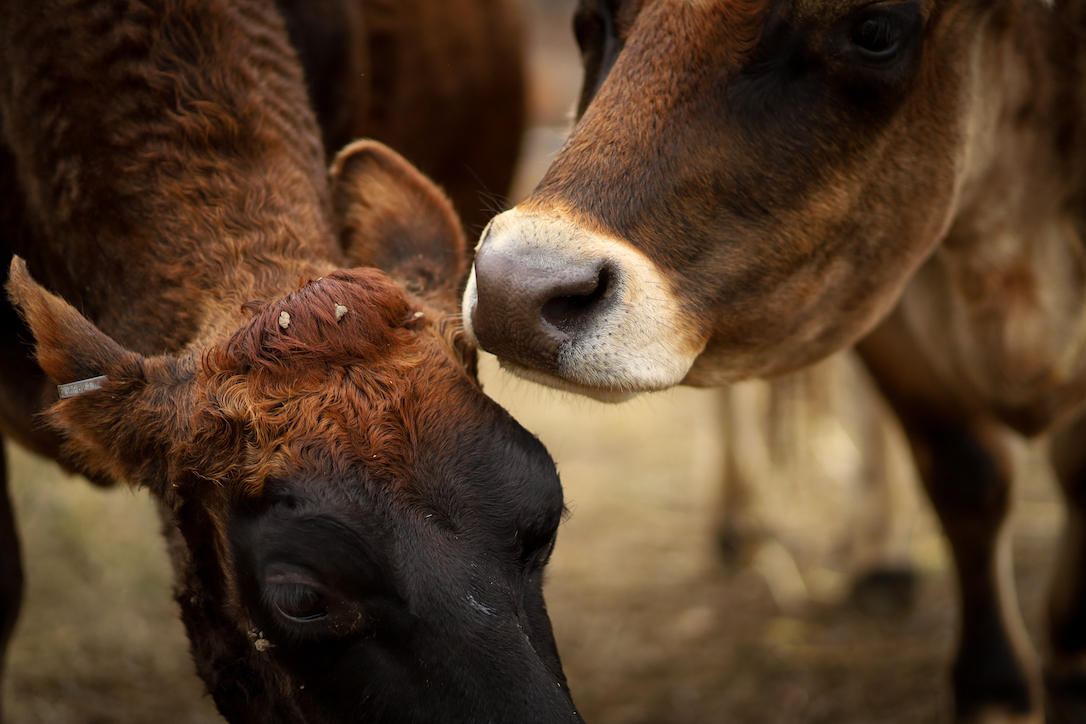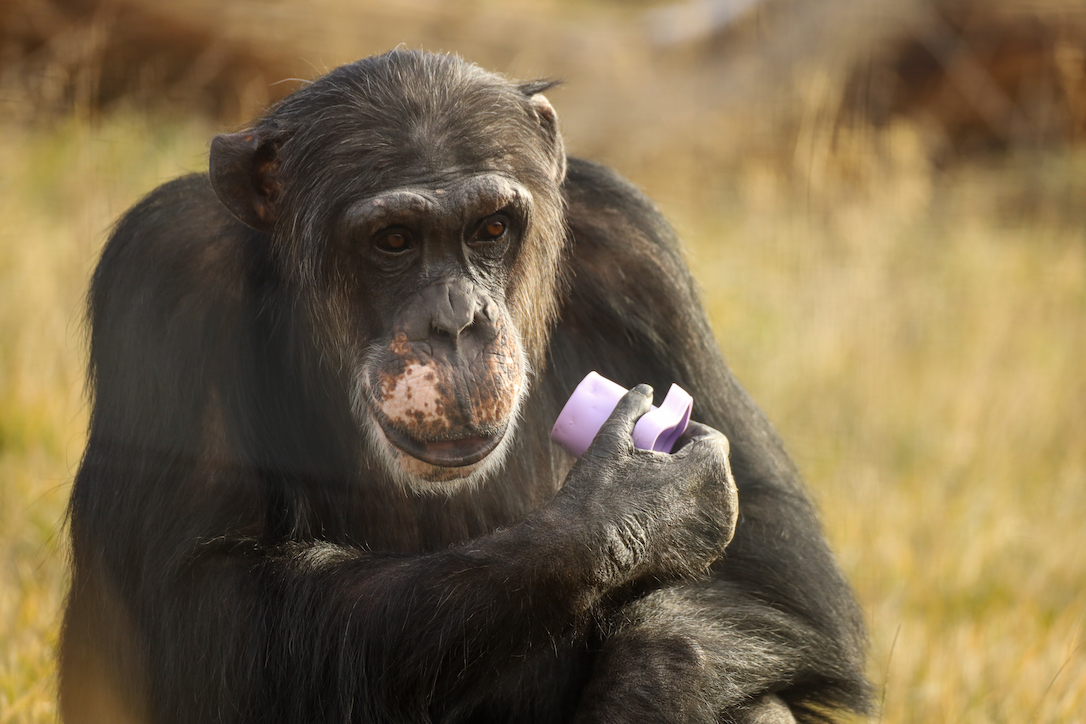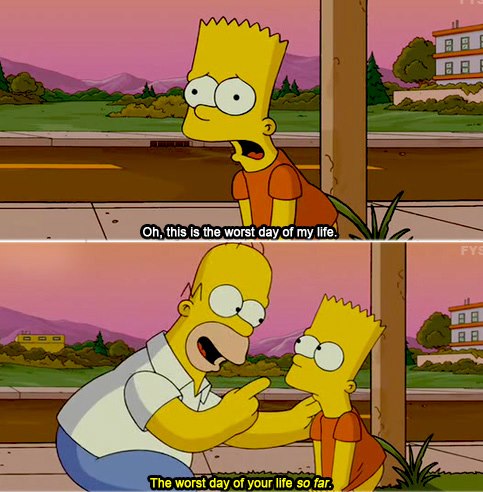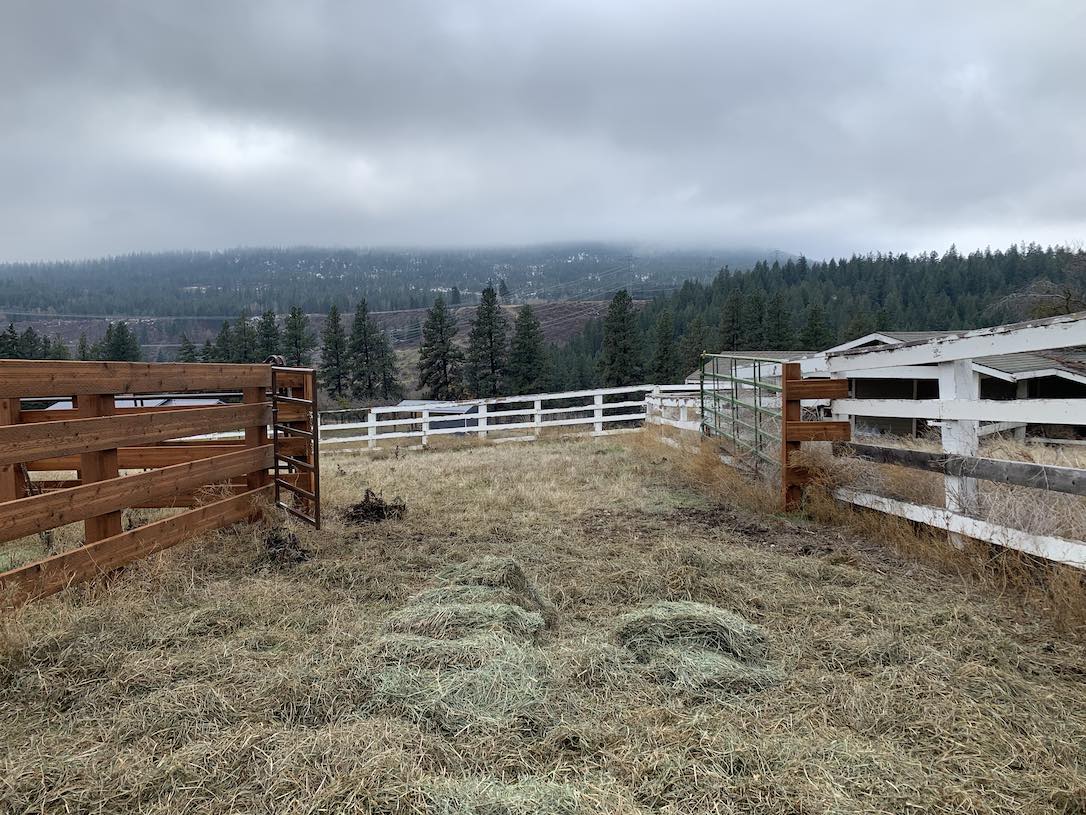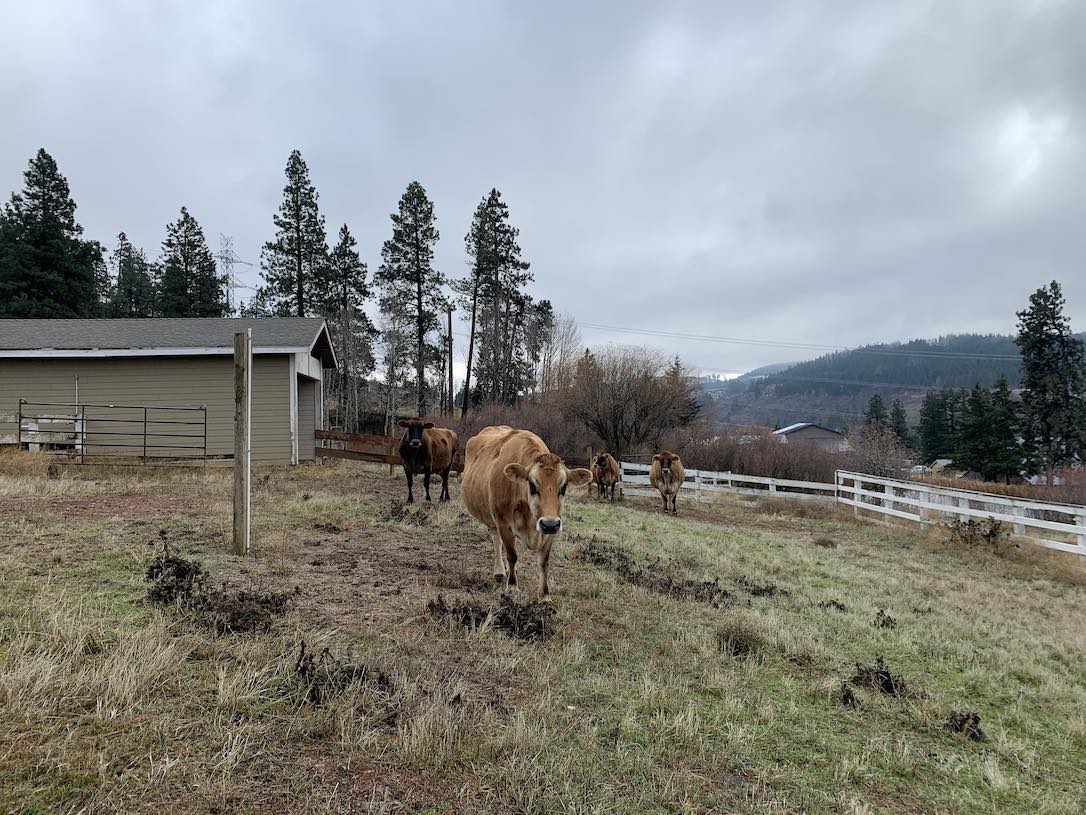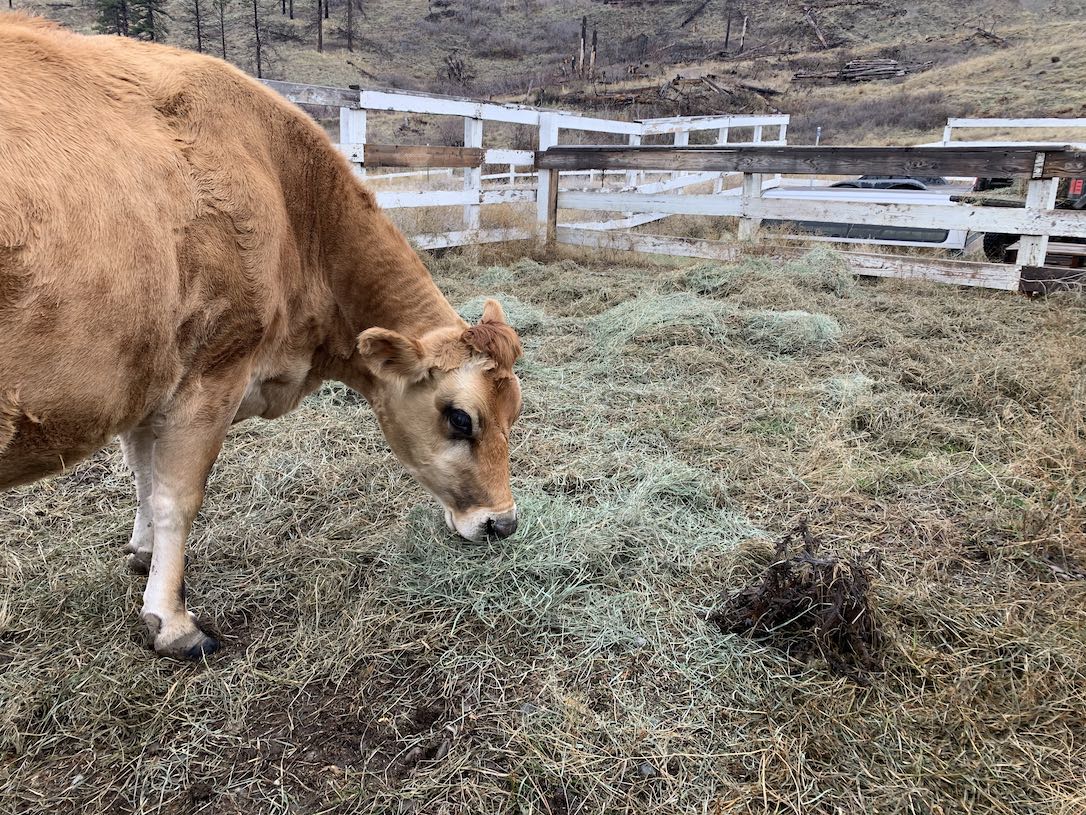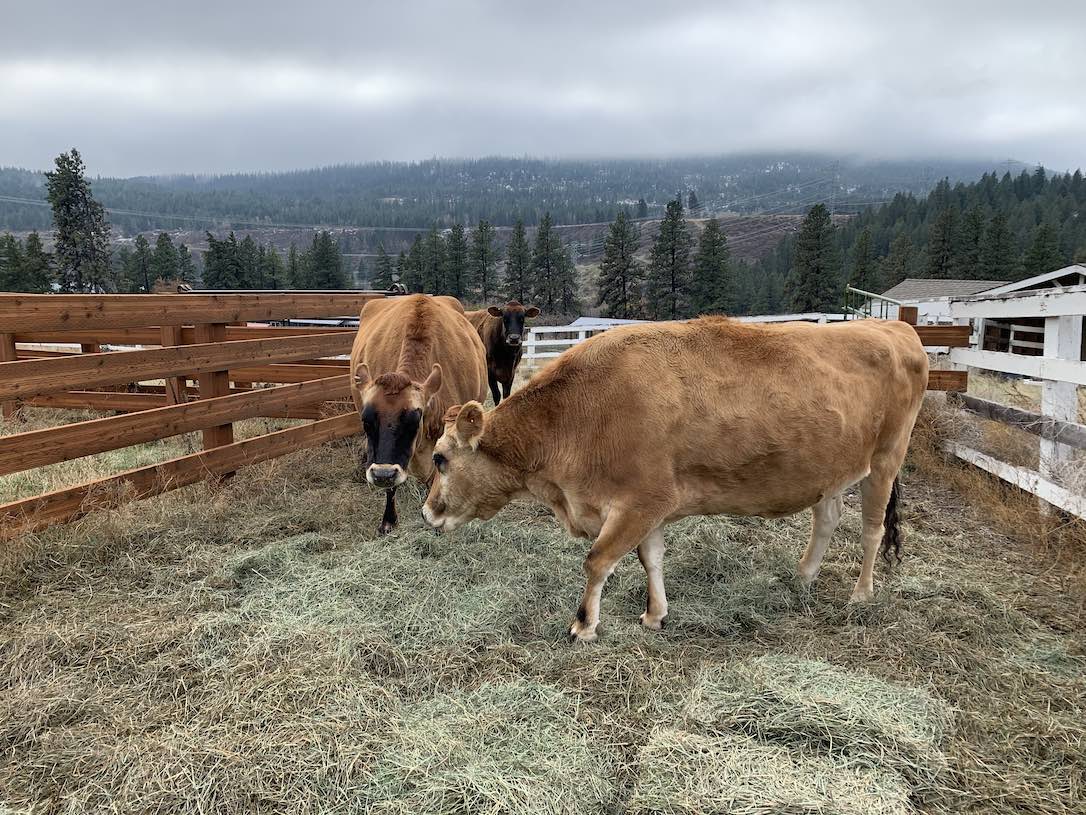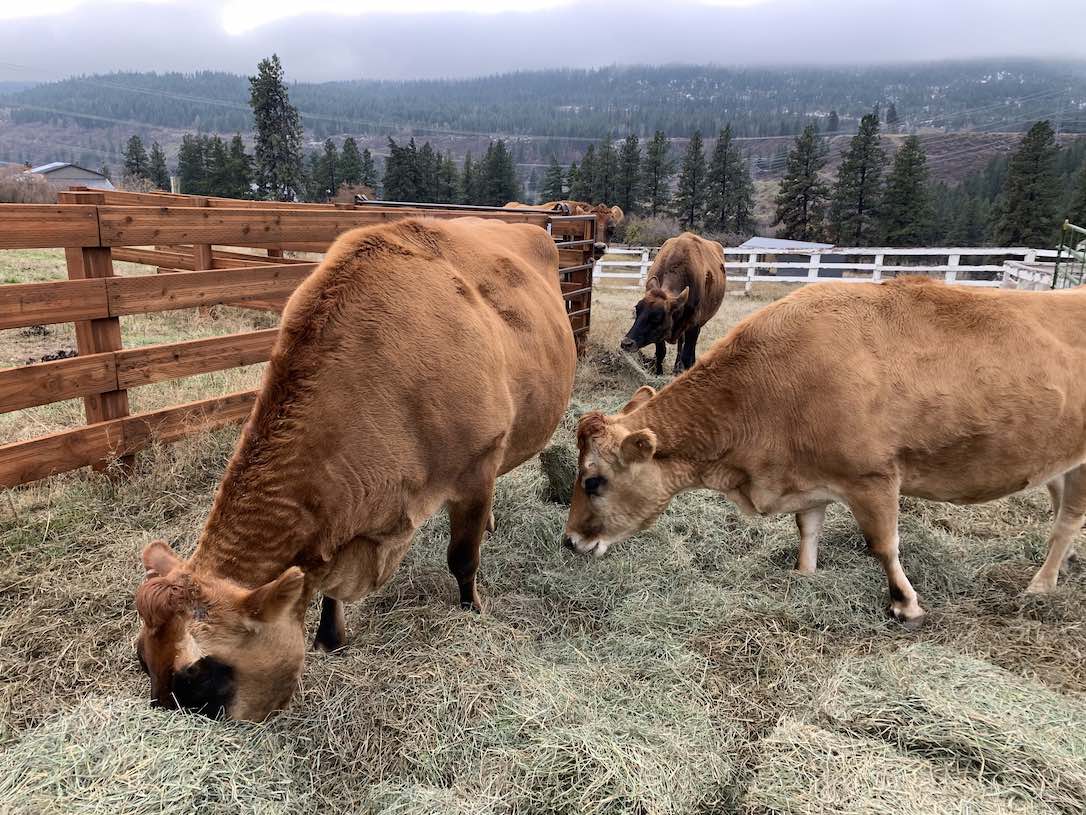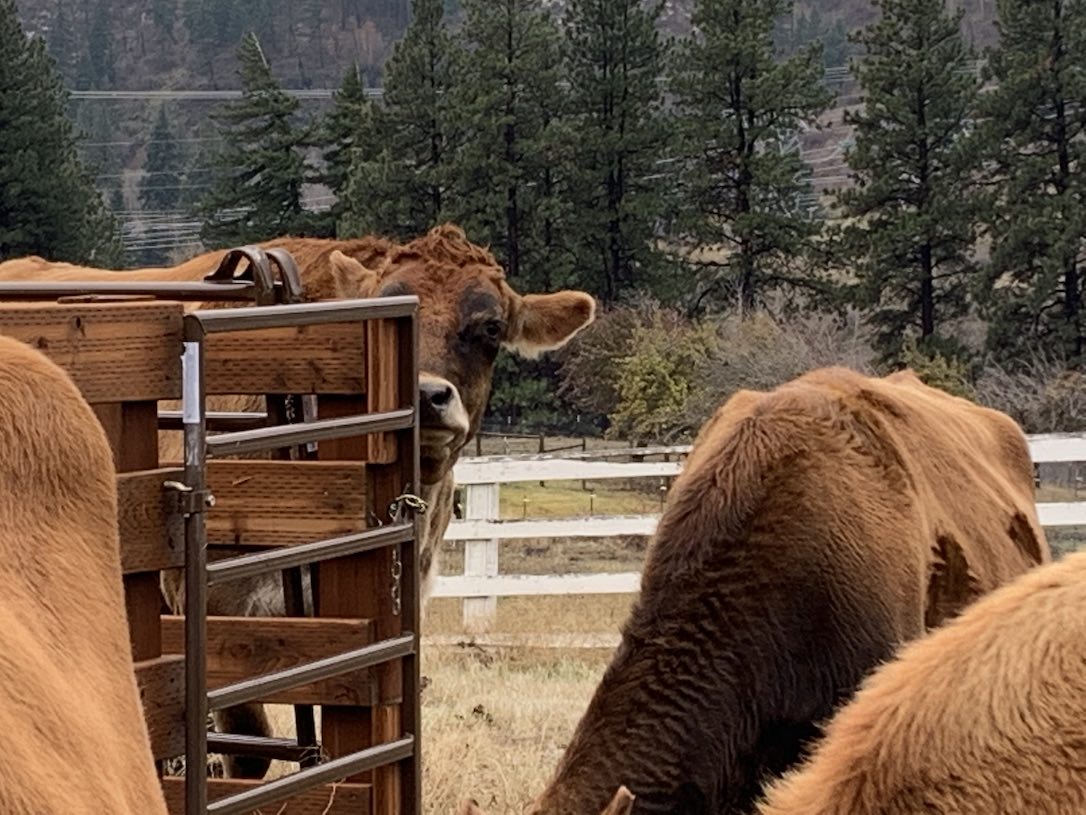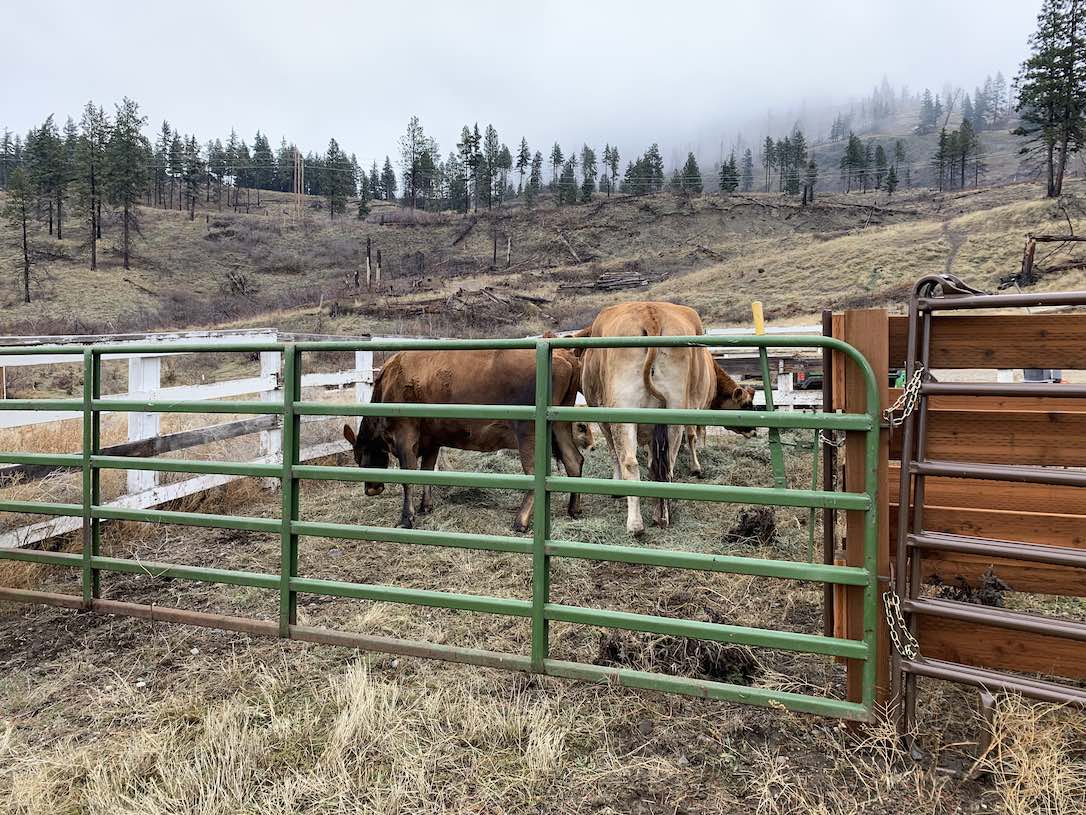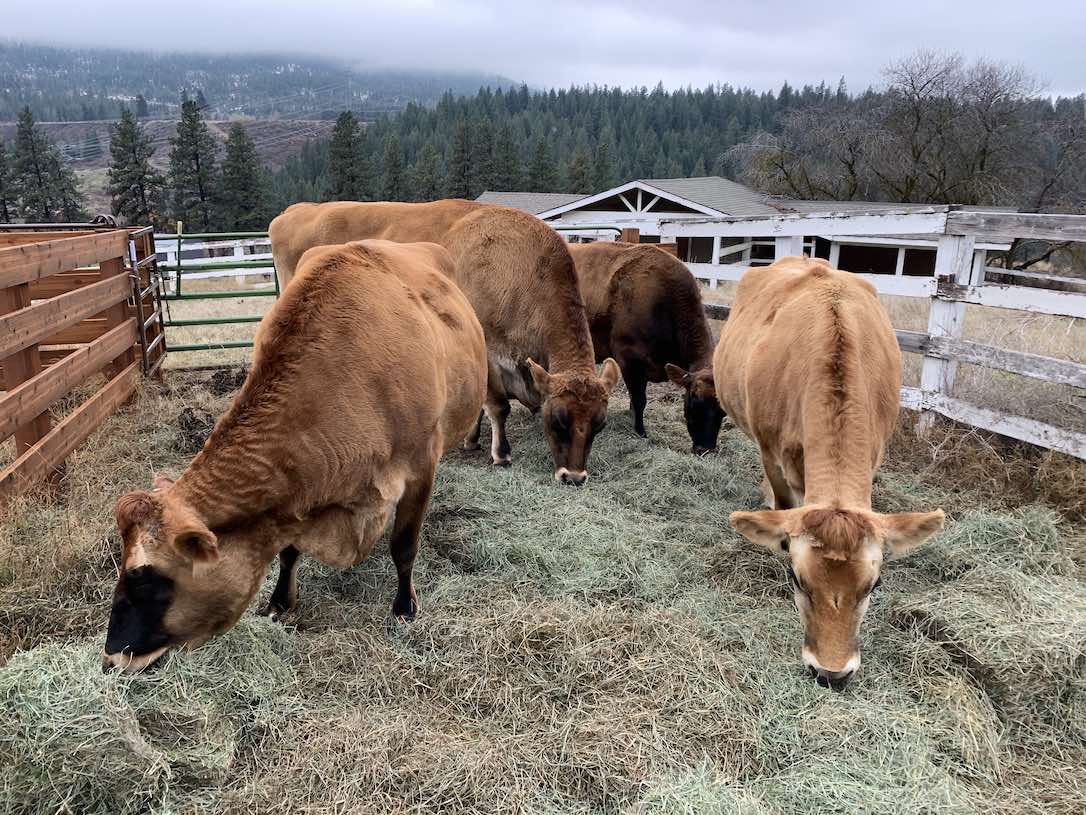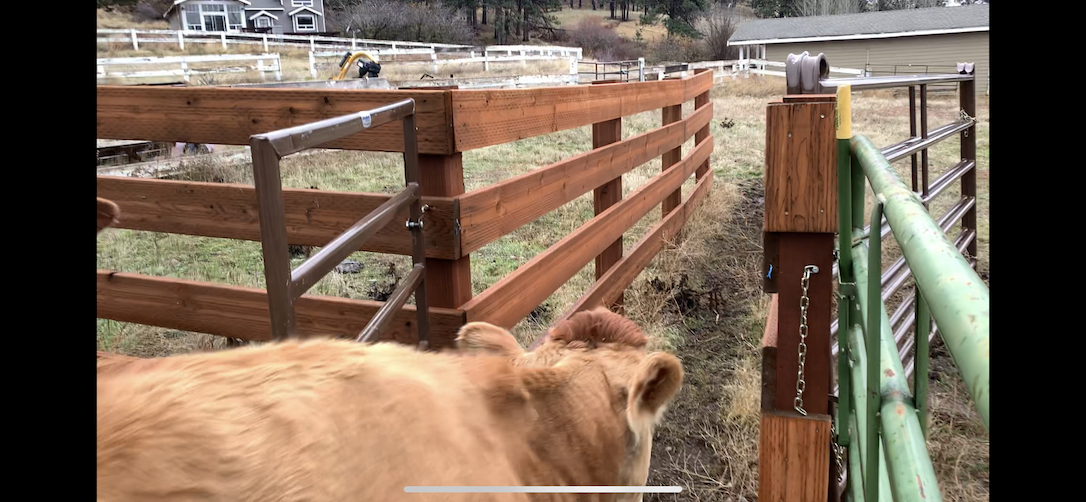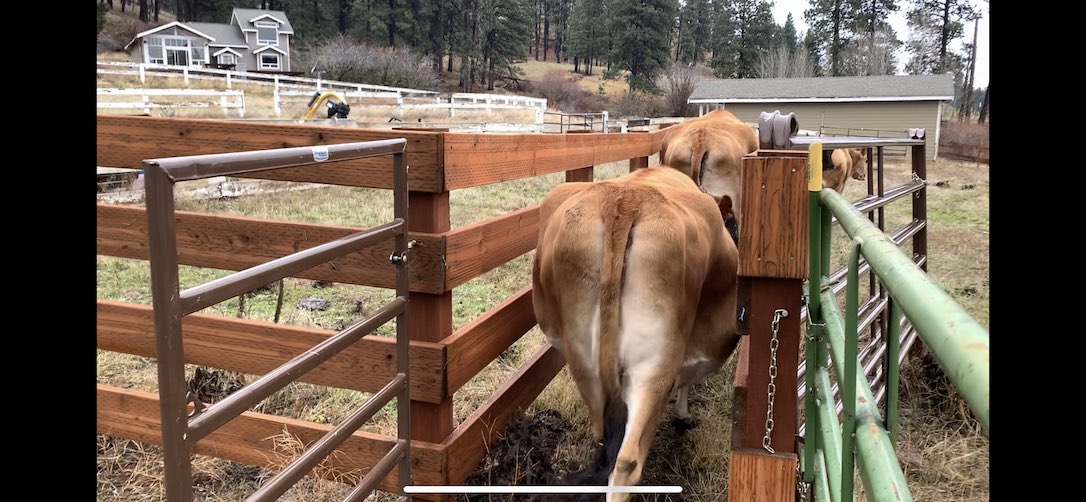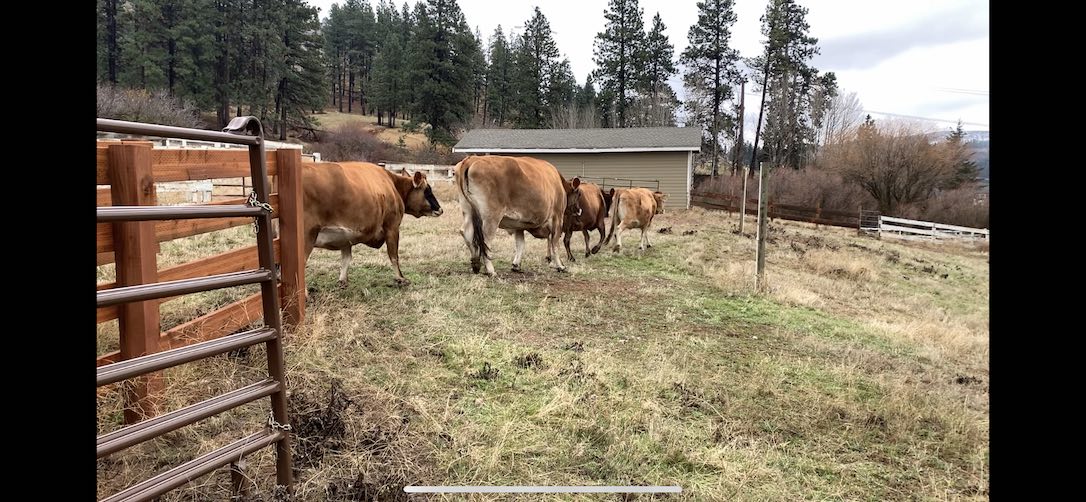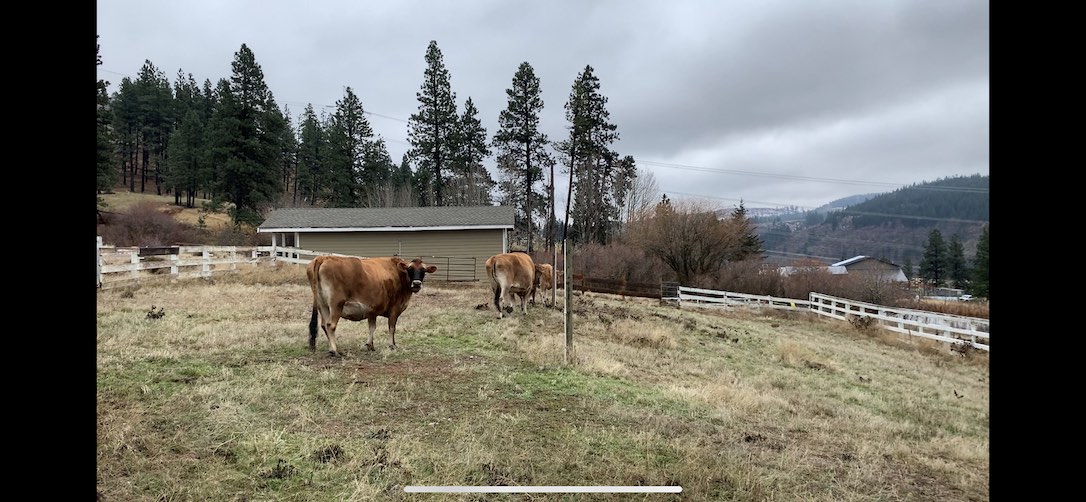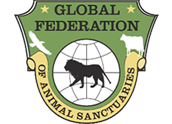Last, but not least of our Bovine Buddies, is the lovely Meredith who, shockingly, only has two sponsors, Monica and Jackie, who actually sponsor all four of our cattle comrades! Thank you for being such stellar supporters, Monica and Jackie! If you would like to boost Meredith’s numbers and become her Bovine Buddy, you can do so here.
Watch the video below created by our co-director, Diana, to fall in love with Meredith!
Meredith is the biological daughter of Honey, the adopted daughter of Betsy, and the adopted sister to Nutmeg. One big happy family! She was born in 2015 during the filming of a reality TV show called Utopia, which aired for only a brief time. Honey and Betsy were purchased for the show from a dairy farm and both were pregnant. After giving birth, Honey had trouble nursing Meredith due to a case of mastitis, which is very painful and is a common complication for dairy cows. Luckily for Meredith, however, Betsy, being pregnant with Nutmeg, prematurely produced milk and eagerly allowed Meredith to nurse. Soon after, Nutmeg was born – impossibly tiny compared to his great size today – and the family unity was complete!
Click here to watch a video of baby Meredith being reunited with her mom(s)!
When the show got cancelled, the four cattle were taken in by Farm Sanctuary in Northern California and when the sanctuary had to close in 2018, they moved to CSNW where they will live out the rest of their lives in cow heaven.
Little Meredith at Farm Sanctuary
I’ve only had about six months to get to know Meredith so far, but she’s been a joy to work with. I quickly learned that she loves to receive scratches and will streeeetch her nose straight up while you scratch under her chin and jaw. She also seems to kindof enjoy gentle eye rubs. I’m told she will forage for willow leaves and wild rose in the summer and I know first hand she loves alfalfa and her daily grain!
Meredith has developed arthritis in her front hoof joints, making it painful to walk, but she’s been a real trooper as the care staff have done their best to diagnose and treat it. She has endured a full season of pokes and prods, transportation to WSU for treatment, limited access to her habitat during recovery, and even chiropractic appointments! She lets us know when she’s irritated, but considering everything she puts up with, she has been very patient. Can you imagine Honey cow in her place?? We would have to wear armor, I think.
Meredith getting scanned at WSU
Meredith and her mom, Honey, share a tender moment while Meredith is separated for recovery
Beautiful wintery Meredith
If you’ve fallen in love with Meredith like we all have, please consider becoming her Bovine Buddy!


